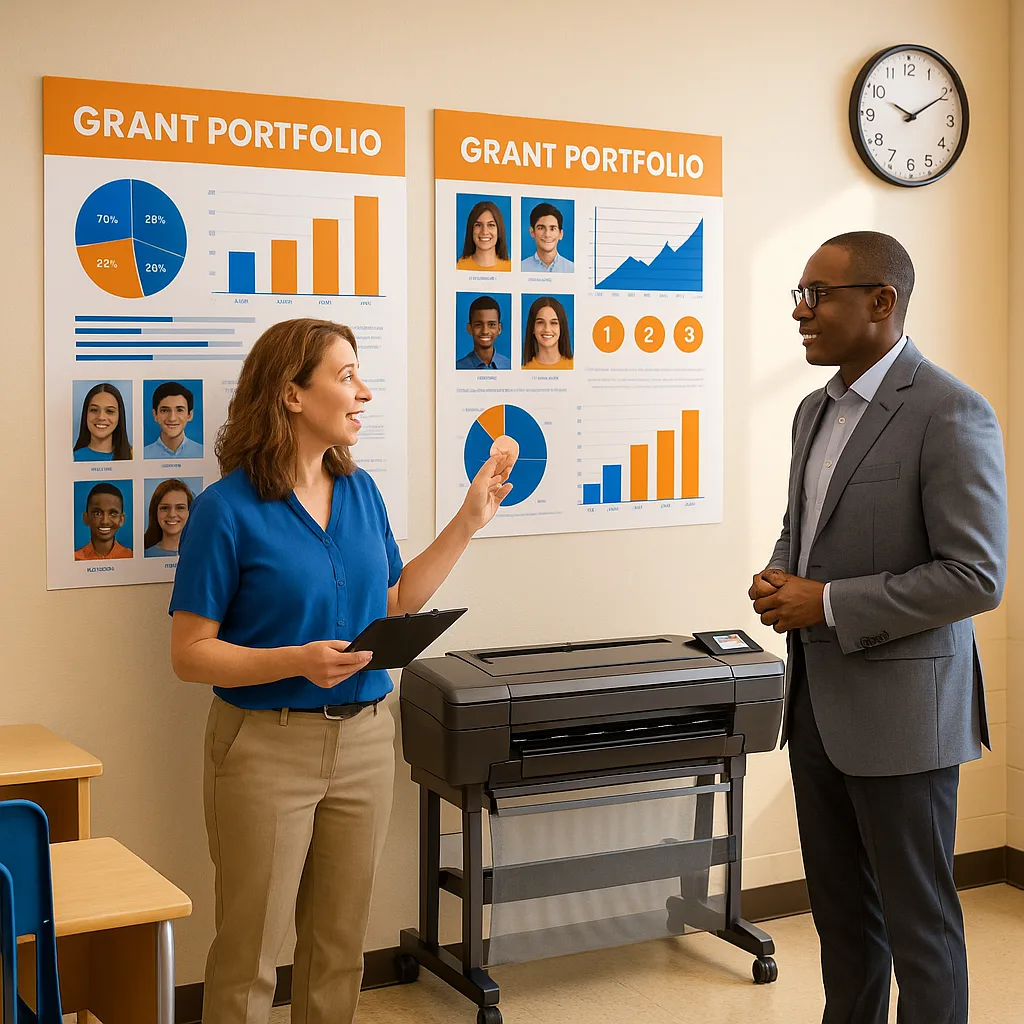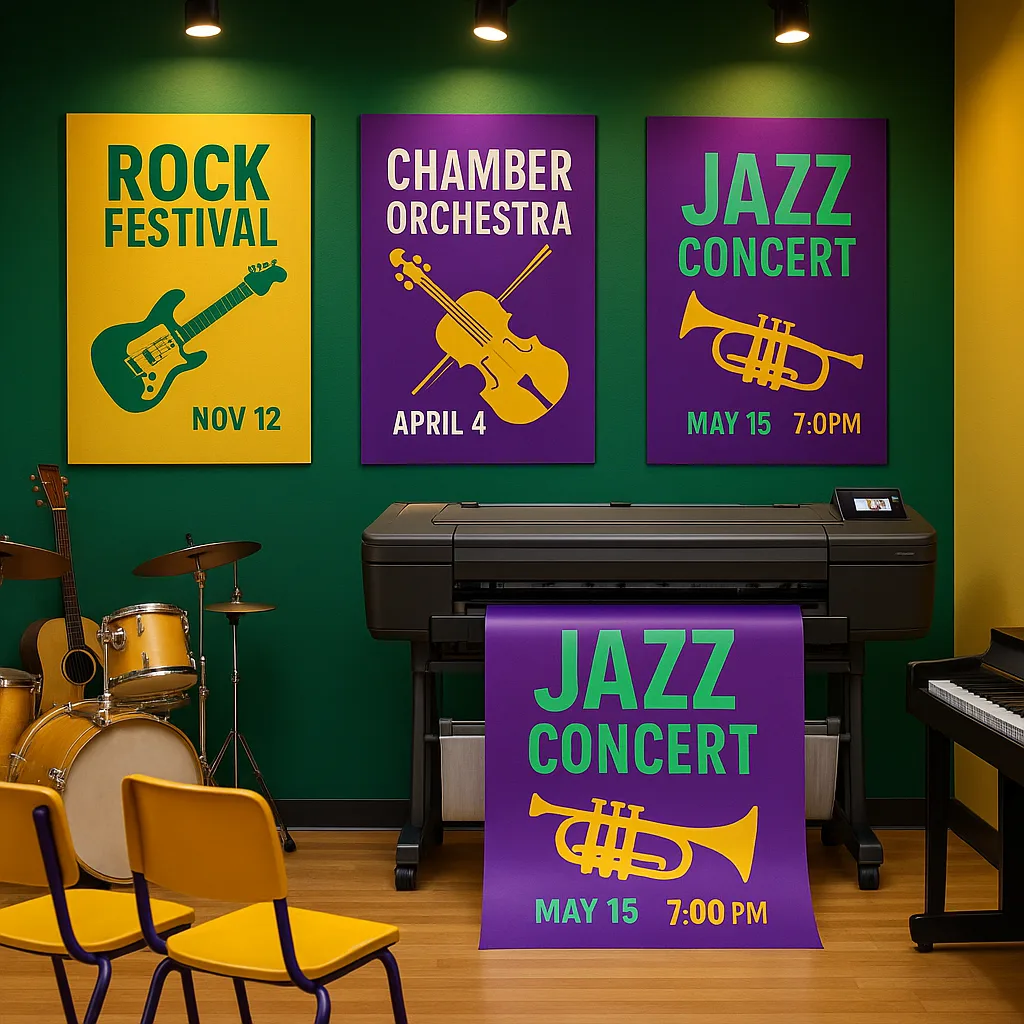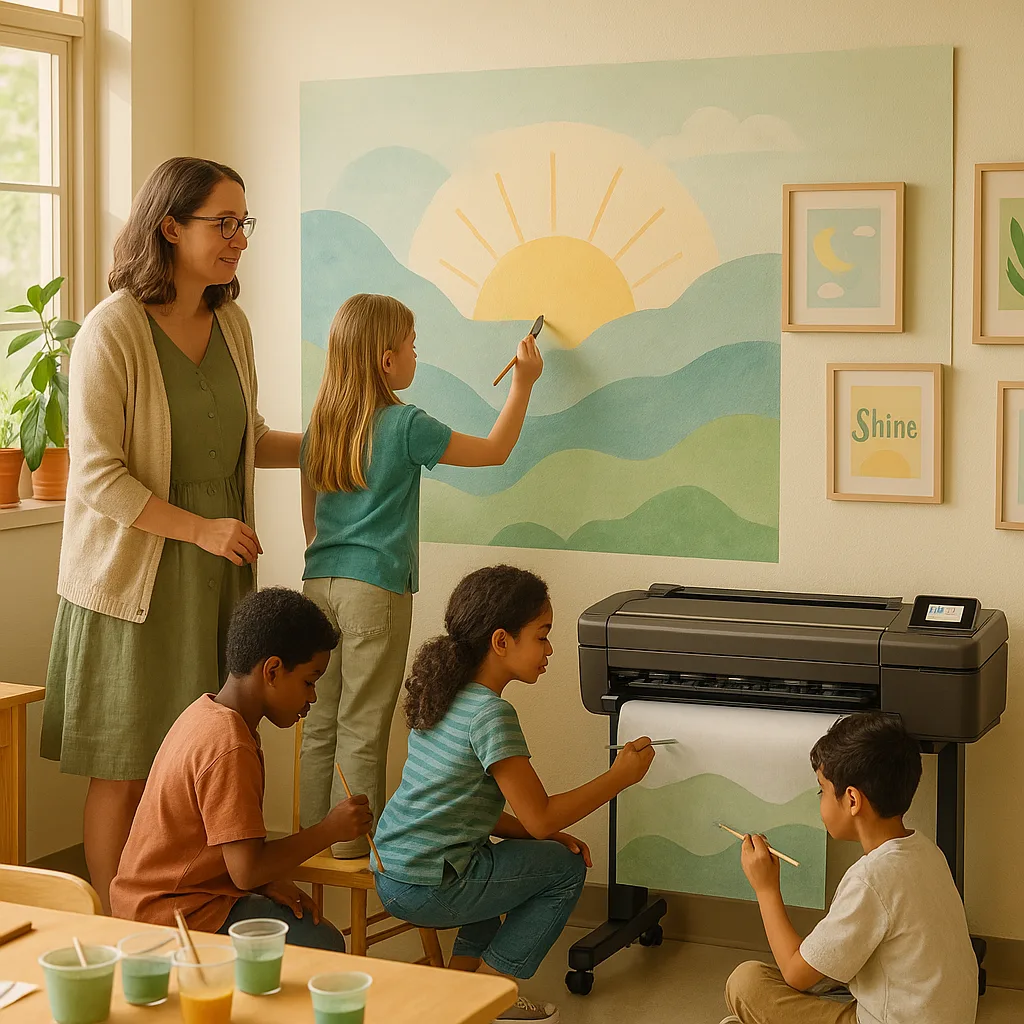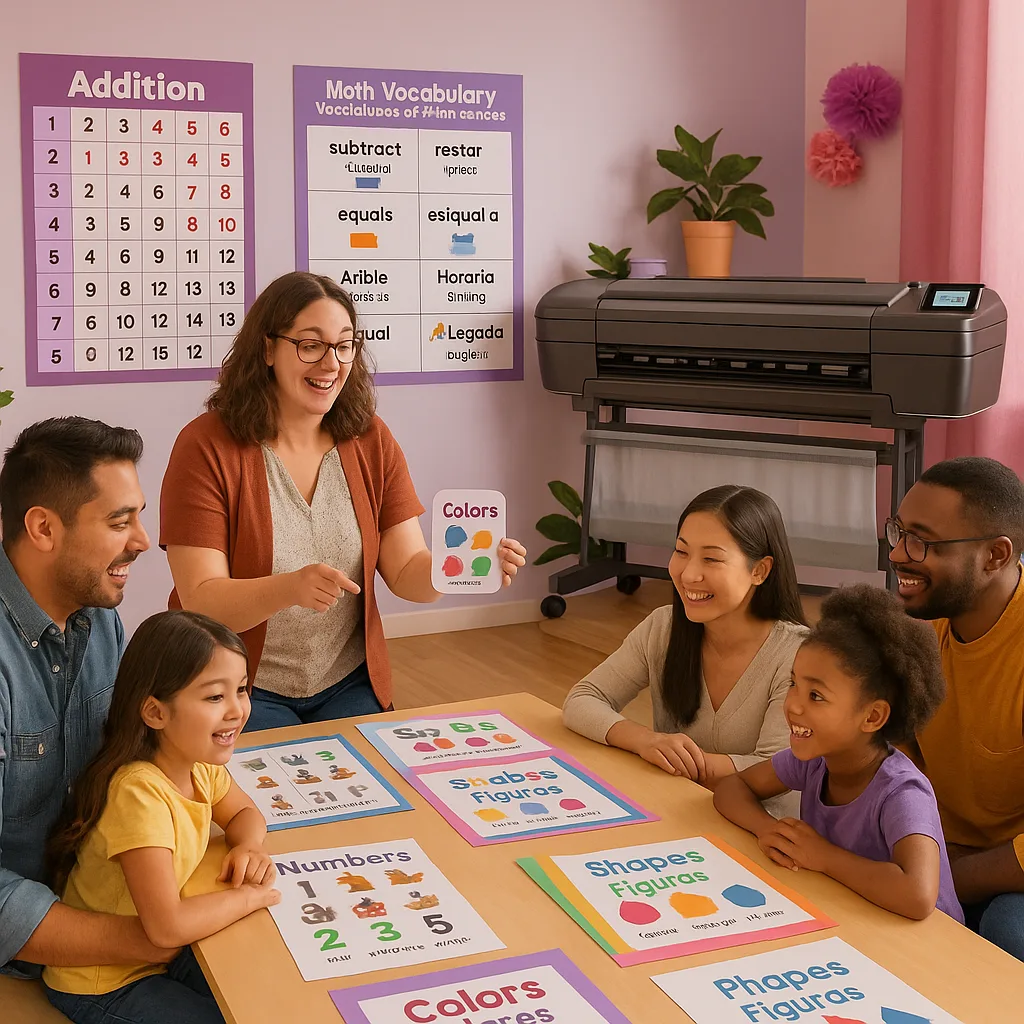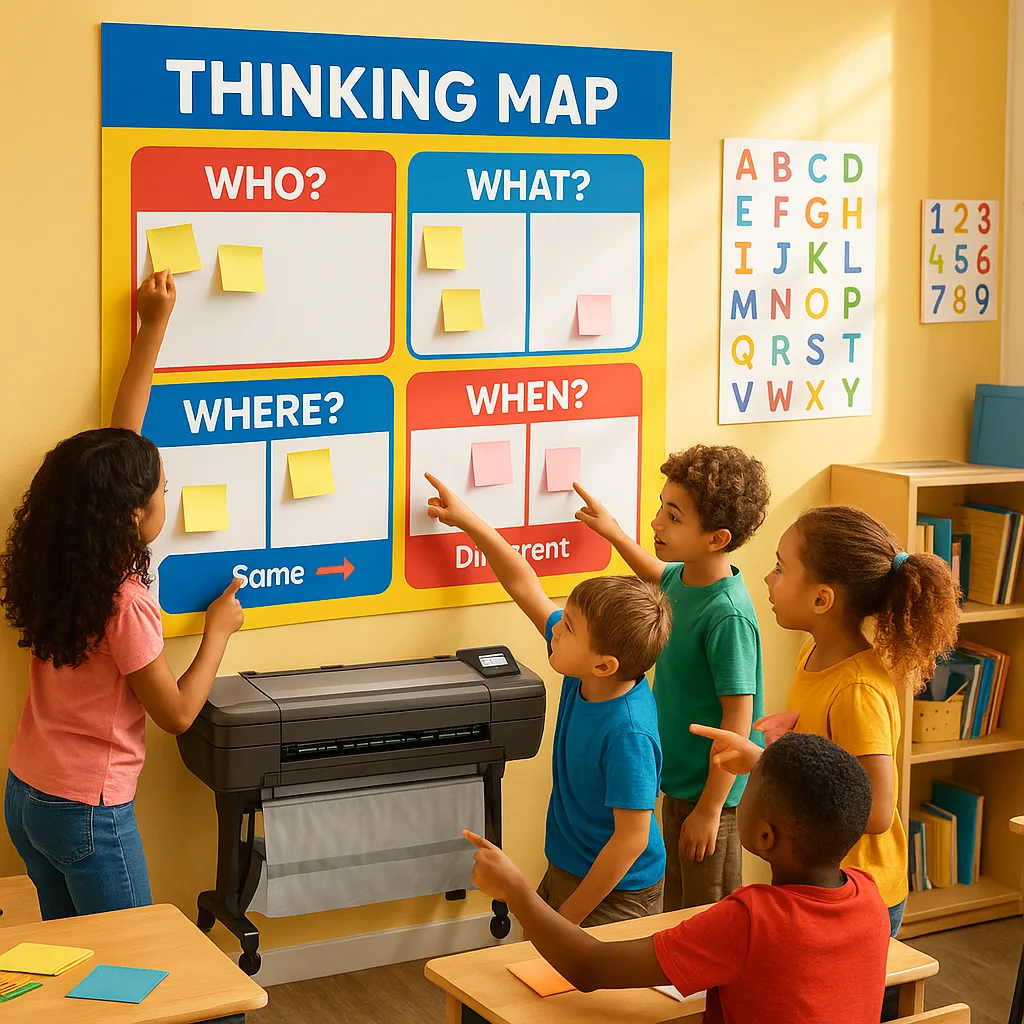
School Poster Printers Transform Critical Thinking
I still remember the moment everything changed in my second-grade classroom. Instead of watching my students mindlessly copy vocabulary words from the board, I saw them clustering around a poster we’d created together, pointing at connections and asking “But why?” That’s when I realized our school poster printers critical thinking potential could transform passive learners into active questioners.
The Hidden Cost of Copy-Paste Learning
After 15 years in elementary classrooms, I’ve witnessed a troubling pattern. Students dutifully copy information, memorize facts, and regurgitate answers—but struggle when asked to explain their reasoning. Recent research from the National Assessment of Educational Progress shows that while 65% of fourth-graders can recall basic facts, only 23% demonstrate proficiency in analytical thinking (NAEP, 2023).
This copy-paste cycle isn’t just limiting—it’s actively harmful to developing minds. When children only practice rote memorization, they miss crucial opportunities to build neural pathways for comparison, evaluation, and synthesis. The good news? Visual learning materials, especially those created with intentional design principles, can break this cycle.
Research Spotlight: Visual Learning Impact
School Poster Printers Critical Thinking Revolution
Let me share what transformed my teaching practice. When our district invested in a color poster maker, I initially thought we’d just make prettier bulletin boards. Instead, we discovered a powerful tool for developing higher-order thinking skills.
The key lies in how we design and use these materials. Rather than creating posters that simply display information, we craft visual tools that prompt investigation. For instance, instead of a traditional “Parts of a Plant” poster with labeled diagrams, we create inquiry boards with close-up photographs and question prompts: “What patterns do you notice?” “How might this part help the plant survive?” “What would happen if…?”
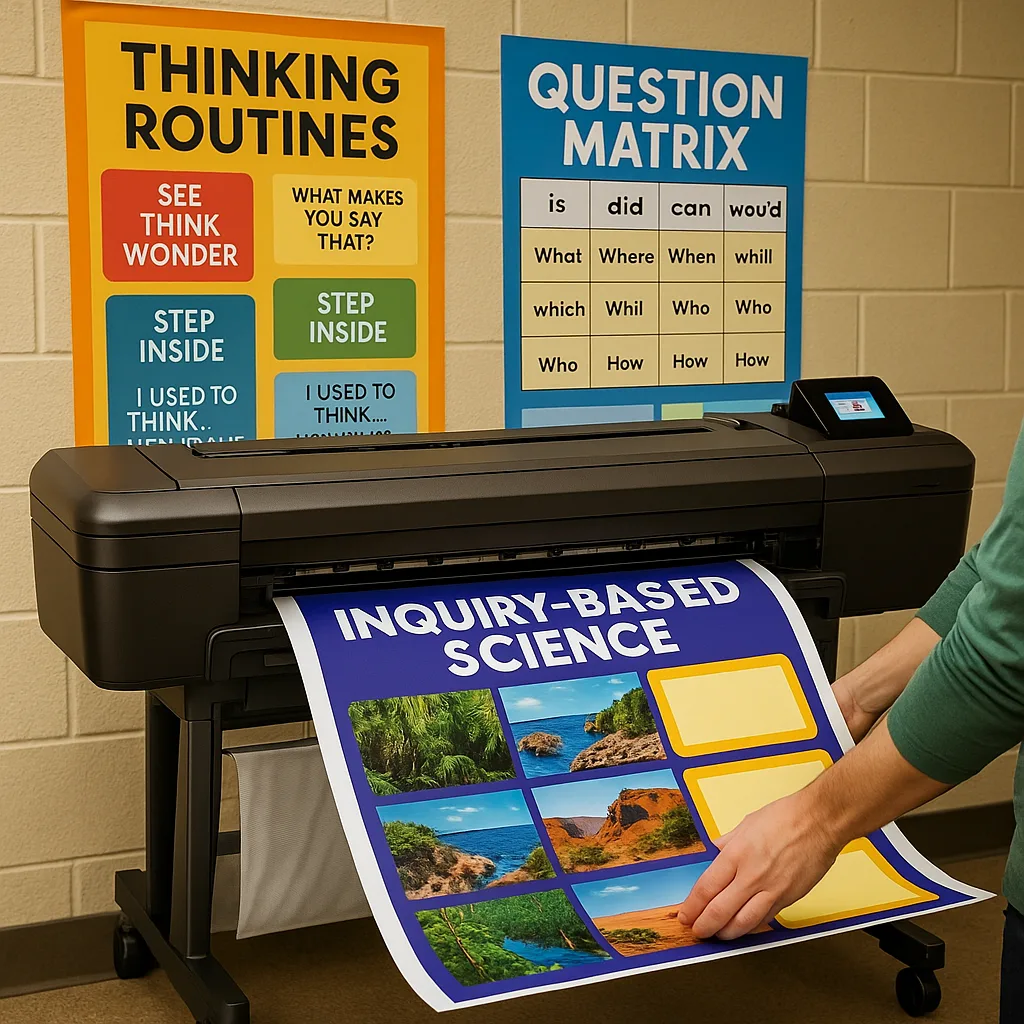
From Passive Display to Active Inquiry
Traditional classroom posters often function as wallpaper—colorful but cognitively inactive. Students might glance at them, but rarely engage deeply. With our school poster printers, we’ve reimagined what educational visuals can do.
Consider this transformation: Instead of posting a completed timeline of historical events, we print partially filled timelines with strategic gaps. Students must research, discuss, and defend where events belong. This simple shift moves learners from passive receivers to active constructors of knowledge.
Transform Your Teaching Today
Ready to break the copy-paste cycle? Our Education Studio 24″ Package includes everything you need to create thinking-focused visuals. Call 866-788-7900 to discover how visual learning can transform your classroom.
Research-Backed Strategies That Work
Educational psychologist Dr. Robert Marzano’s research shows that visual representations can increase student achievement by up to 27 percentile points when used strategically (Marzano Research, 2023). But not all visuals are created equal. Here’s what makes the difference:
Strategy 1: Comparison Charts
Create side-by-side visuals that prompt students to identify similarities and differences. For example, print ecosystem comparison posters showing desert vs. rainforest with empty Venn diagram spaces. Students fill in observations, defending their categorizations with evidence.
of students showed improved analytical skills when using comparison-based visual materials
Strategy 2: Question Matrices
Design posters with question stems at different cognitive levels. Using our poster design software, create grids progressing from “What is…?” to “What if…?” Students use these as thinking frameworks across subjects.
of teachers reported increased student questioning after implementing visual question matrices
School Poster Printers Critical Thinking Applications
Let me walk you through practical applications that align with state standards while fostering deep thinking. These aren’t just theories—they’re strategies I’ve tested across 22 schools in my district.
Math Reasoning
Create number pattern posters with strategic gapsImplementation Tips
Print large number grids (1-100) with certain numbers missing. Students must identify patterns and explain their reasoning. Use your color poster maker to highlight pattern groups in different colors.Science Inquiry
Design 'What Would Happen If?' experiment boardsHands-On Ideas
Create hypothesis testing posters with spaces for predictions, observations, and conclusions. Students document their thinking process visually, making scientific reasoning visible and discussable.Reading Analysis
Build character trait evidence chartsDeep Dive Strategy
Print character silhouettes with surrounding text boxes. Students find textual evidence for character traits, connecting quotes to conclusions. This visual format makes abstract literary analysis concrete.Making It Work in Your Classroom
Implementation doesn’t have to be overwhelming. Start small with these teacher-tested approaches:
Begin with one thinking routine poster. I recommend starting with “See-Think-Wonder” boards where students observe an image and record their thoughts in three categories.
Introduce comparison charts in math or science. Use your school poster printers to create templates students can annotate with dry-erase markers.
Add synthesis activities using visual organizers. Students combine information from multiple sources on large-format posters, creating their own knowledge maps.
Empower students to design their own thinking tools. With access to a design service, even young learners can create professional-looking analytical frameworks.
Measuring Success: Beyond Test Scores
While standardized assessments matter, the real victories happen daily. Here’s what I track to ensure our visual learning materials truly develop critical thinking:
One third-grade teacher in our district documented a 340% increase in student-generated questions after implementing visual thinking routines. More importantly, the quality of questions evolved from factual recalls to analytical inquiries.
Parent Partnership Through Visual Learning
Extend critical thinking beyond classroom walls. Our drag-and-drop printing capabilities make it simple to create take-home thinking tools. Add QR codes linking to family discussion prompts, turning dinner conversations into thinking laboratories.
Quick Win Tip
Start tomorrow with a “Mystery Image” poster. Print a close-up photo of an everyday object. Watch as students hypothesize, debate, and build reasoning skills through simple observation.

Your Next Steps: From Theory to Practice
Breaking the copy-paste cycle doesn’t require a complete curriculum overhaul. It starts with one poster, one thinking routine, one transformed lesson. Our team of education specialists can help you choose the right tools for your specific needs.
Remember, every great educational transformation begins with a single step. Today, that step could be replacing one rote-learning poster with a thinking-focused visual. Tomorrow, your students could be the ones creating knowledge rather than just consuming it. With the right tools—like our school poster printers critical thinking solutions—you’re not just decorating walls. You’re building minds.


